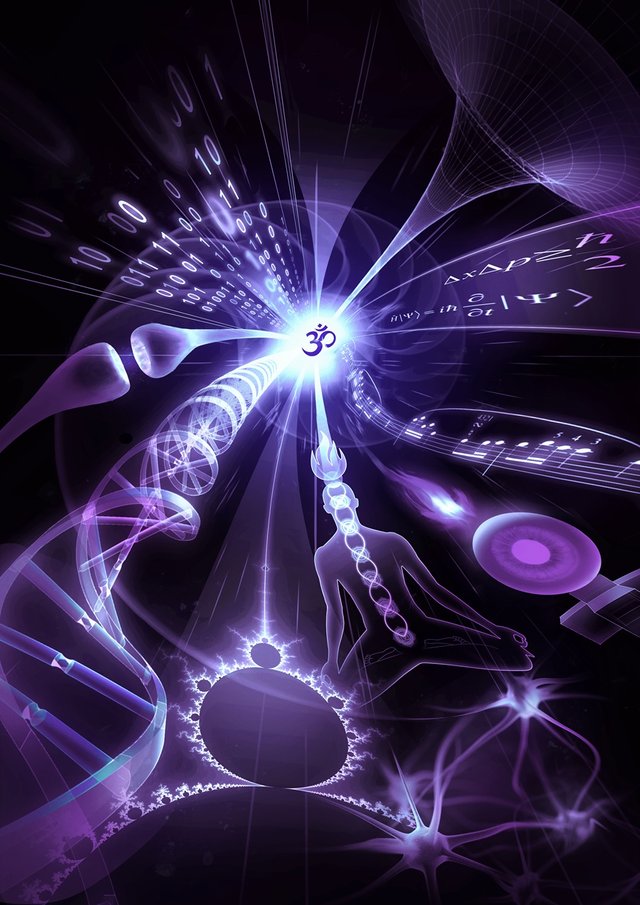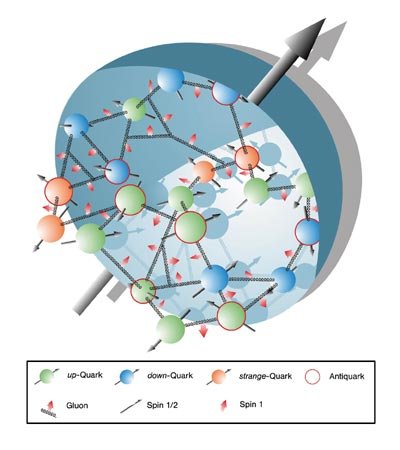The Eschaton Algorithm
In this essay I will extrapolate Tsang's fractal brain theory to the macroscopic dimensions of the universe and the microscopic dimensions of subatomic events.
Background
In my previous essay I discussed how Tsang's Fractal Brain Theory shows an intelligence algorithm, which possibly may herald the advent of superhuman artificial general intelligence.
Tsang describes how a self-modifying recursive algorithm, which generates divergent and convergent binary trees which intersect to create links, forms the basis at every level of ontogenesis from genes to neurons. The algorithm takes itself as an input and then maps this into a new representation. Thus functionally and structurally binary tree like fractals are created, which interact to give rise to a great complexity with interactions over different levels. Tsang has baptised this as the "Fractal Brain Theory". In a recent YouTube video Tsang has also speculated that such an algorithm may be what created the present universe we live in.
This perfectly fits the idea that we might live in a simulation, which is run on what Terence McKenna calls the "Eschaton" and Teilhard the Chardin the Omega point. One interpretation is that this Omega point is a hypercomputer which was created as a consequence of a technological singularity. Another interpretation is that due to this algorithm being active at every level of existence, there is no need for a specific hypercomputer; reality is a collection of only omega point computers, all carrying out the same algorithm.
The Universe
Look at this picture which compares the structure of a neuron to structures in the universe: Vast highways of galaxies weave a pattern that is structurally and functionally at first glance hardly distinguishable from the pattern of a brain cell? One can say that this is "apophenia" or the human tendency to perceive meaningful patterns within random data. Because it quacks and walks like a duck does not necessarily mean it is a duck, one could state. But this one is deeper. Neuronal networks are functional patterns that we can see in structure: the functional representation of a mapping network is literally identical to the very structure we observe. Whenever you observe such structures, you can almost be damn sure there is some intelligent integration taking place here.
Subatomic networks
Look at this image of subatomic particle processes taking place inside an atom. Interesting network, don't you think?
Of course we can't be 100% sure that Tsang's Brain fractal is present here too, it is quite a good pointer to the fact that it might be.
Akasha
In my book "Transcendental Metaphysics" I describe a hypothesis that a kind of protoconscious energy, called "conscienergy" may be the ultimate foundation of reality. In other words I claim that self-sustaining energy forms are sentient. They become self-sustaining by forming a circular or toroidal standing wave. This forms a so-called reality cell. A reality cell is very similar to a biological cell. It can grow and divide. Thus we create a binary tree type division similar to the ontogenesis of life. A great multiplicity of such reality cells forms a matrix, in which the cells are stacked in the cubic closest packing, leading to a so-called isotropic vector matrix. We call this matrix the quantum vacuum or the zero-point field. The ancients called this the ether in Western traditions and the Akasha in Eastern traditions.
A second level of complexity arises once pure conscienergy penetrates this matrix. These penetrating energy tentacles are what we call photons. In my panpsychic pancomputationalism model, these photons are sentient. When a photon is present in a reality cell, we could say the cell has a value of 1; when a photon is absent, the cell has a value of 0. Thus every reality cell is like a bit in a computer.
Certain reality cells can form cliques and also form a neural net like structure as has been suggested by Abraham and Roy in "Demystifying the Akasha".
When two photons approach each other they are attracted to each other since they cause a distortive energy gradient including pilot waves, which makes that the photons start to circumambulate each other. This is what Steven Kaufman in his book "Unified Reality Theory" calls a compound process. This is the generation of a material particle, which has a periodicity of revolution. It is this periodicity of revolution what creates time in this model. In this model time and space are therefore less dependent on each other than in Einstein's spacetime model.
Interestingly, Eva Deli in her book "The Science of Consciousness" speaks also about a fractal structure of reality in which space and time a likewise separated. Deli claims that the time has come to re-evaluate the notion of spacetime from general relativity, which makes it impossible to reunite the microworld of quantum mechanics with the macro world of general relativity in the attempt to create a so-called "Theory of Everything". These avenues, which explore whether "spacetime" was a conceptual error, are certainly worthwhile exploring.
What is perhaps even more interestingly is that the strings forming reality cells might be dissolved, which could allow for a possibility to harvest energy from the zero-point field.
The Akasha is thus a binary tree generated environment which has intrinsic computational and sensing abilities. This idea would certainly well fit the notion of a brain-like fractal up to the smallest dimensions. Are we looking at the brain of God here? Or is this the Omega Hypercomputer called the Eschaton? Or is it both?
Conclusion
Both in the micro- and macroworld neuronal network like structures appear to be present. In the framework of the Akasha as the ultimate smallest dimension which might exist, such networks have also been suggested. Thus Tsang's ideas about a Brain fractal may well extend beyond such networks in biological life forms. Perhaps indeed are the divergence, convergence and intersection link up aspects of the recursive self-modifying binary tree generating algorithm, what generates the networks. Perhaps is the great variety of fractal structures showing the Fibonacci numbers and the self-similar number Phi the very consequence of this recursive self-modifying algorithm, which like Fibonacci and other fractals takes the previous output to be the new input or even takes the process itself to be the new input, being operand and operated upon simultaneously. In fact this might be the very Ouroboric tailbiting process, which Tim Gross calls "Cosmosemiosis"; by which conscienergy or "that what experiences" gets to know itself and becomes aware of itself, creating ever new technological singularities, which give birth to new universes. Is it then perhaps a good educated guess to state that this recursive self-modifying algorithm might be the Eschaton algorithm?
Images from:
viralnovelty.net/wp-content/uploads/2014/01/brain-cell
cerncourier.com/cws/article/cern/28833/1/cerndesy1_4-03
If you liked this post, please upvote and/or resteem. You can find my book "Is Intelligence an Algorithm?" here and my book "Transcendental metaphysics" here.
By Antonin Tuynman a.k.a. @technovedanta. 14-07-2017.



Upvoted, rEsteemed and followed.
This is a very good analysis. Many more shall be walking out of the Matrix thanks to good work like this.
Thank you, SteemON, and...
Thanks Frank! Followed back and let's immanentise the Eschaton!
#itshappening
https://steemit.com/steem/@frankbacon/tiny-colorado-town-turns-to-steem-block-a-frank-bacon-fortune-speller
Very complicated but interesting article, but you explained it in simple words, which a layman can also understand @technovedanta
Wow definitely over my head but equally as interesting!
Thanks
very interesting...!!
Thanks
Followed and Upvote you.. Please favor back.
OK done
The top image of this post is copyright protected and has been copyright protected since the publication of my books Technovedanta, Transcendental Metaphysics and Is Intelligence an Algorithm.